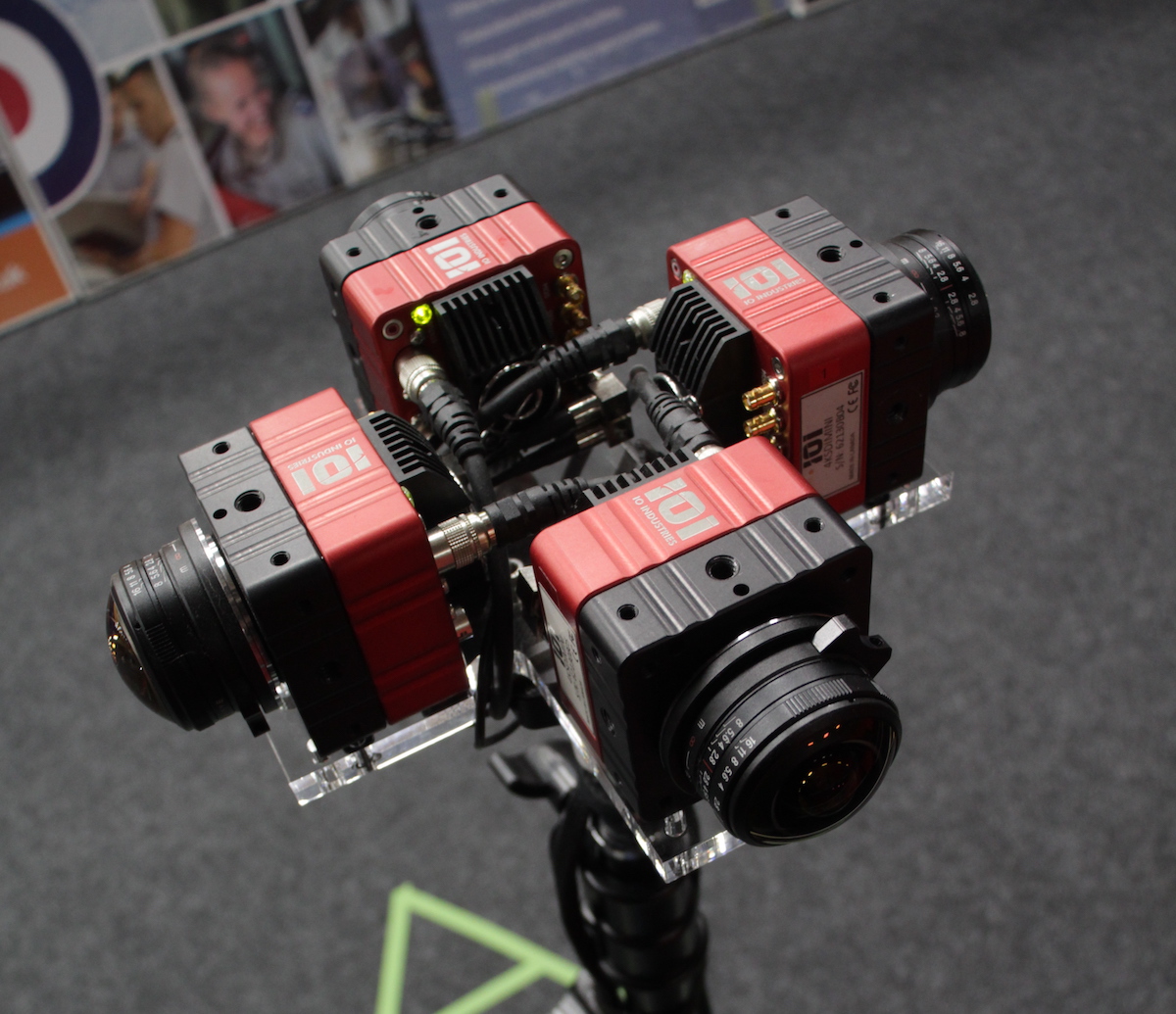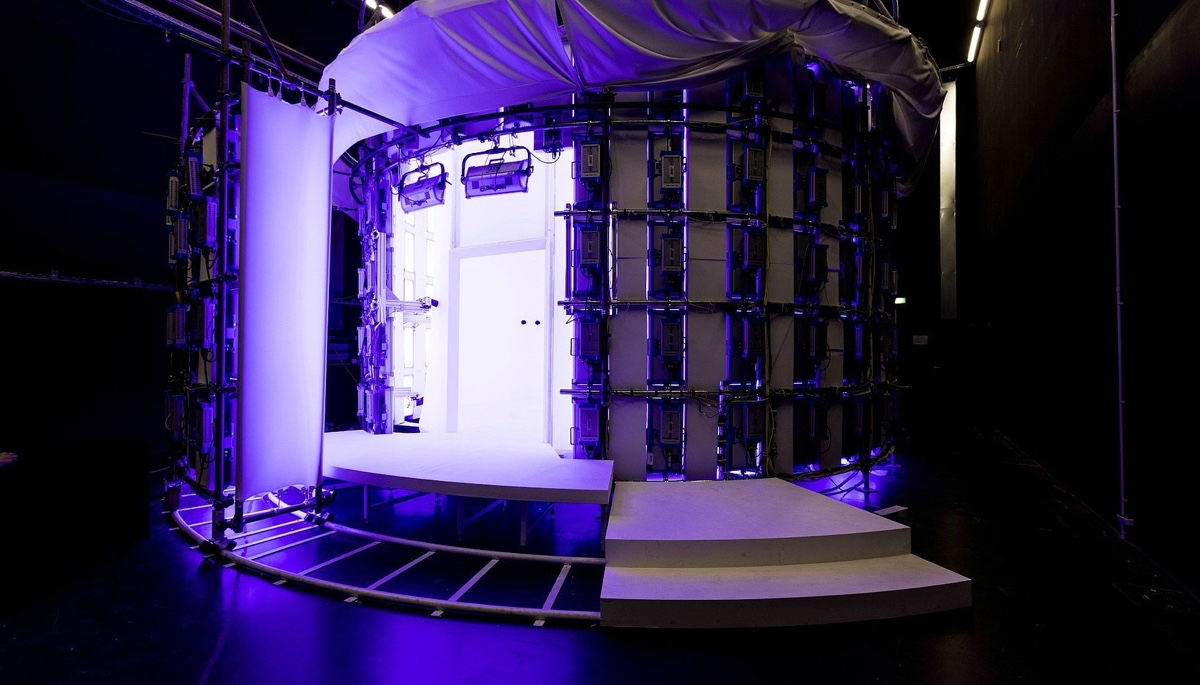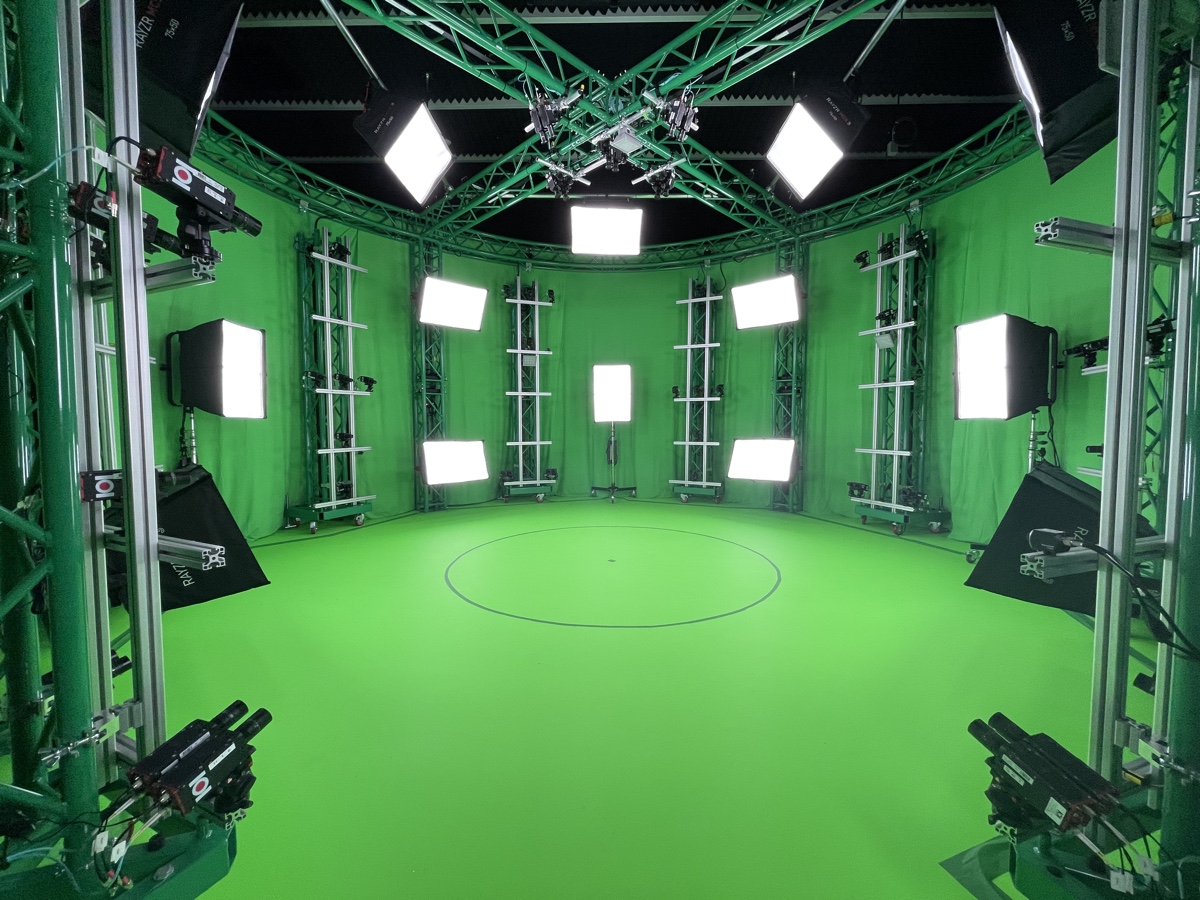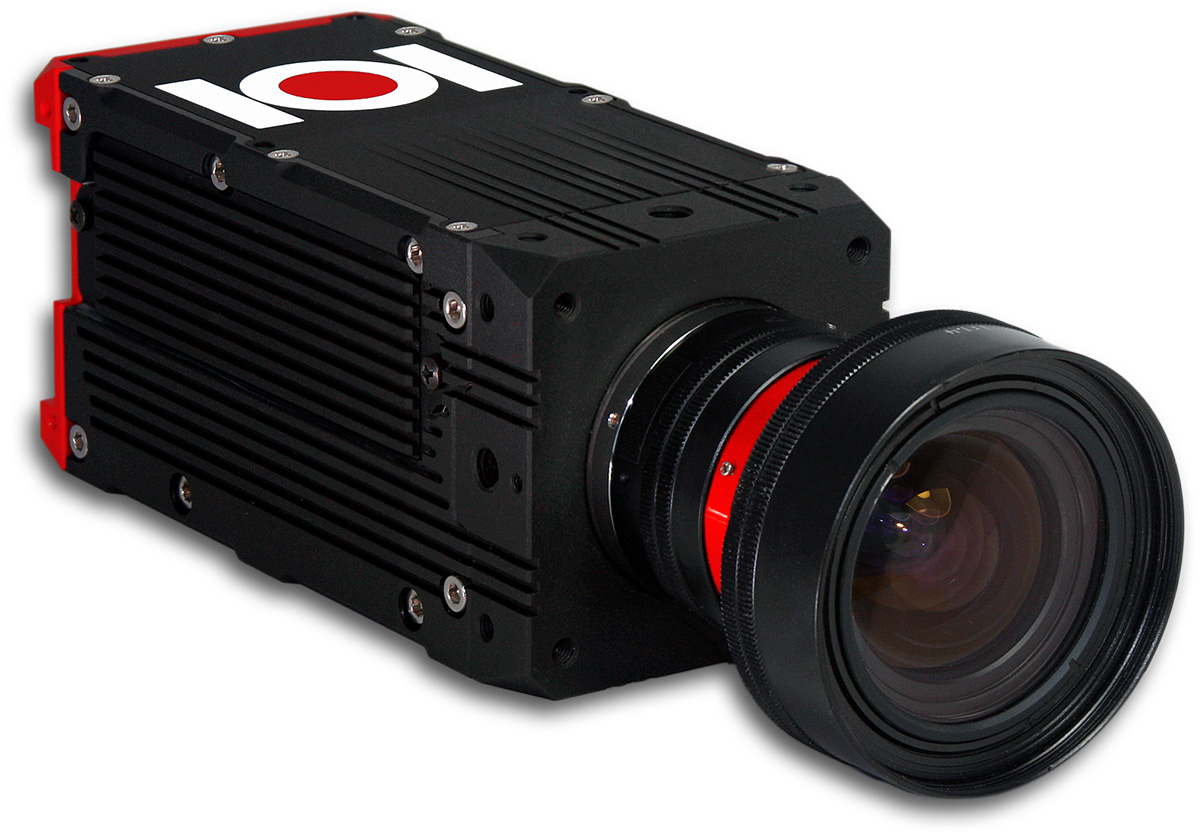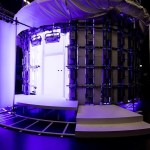How IO Industries’ SDI mini-cams can go beyond broadcast and film to stereoscopic and VR requirements.
When live streaming provider Focal Point VR was looking for a suitable multi-camera solution for its 360 degree capture rigs used primarily at live sporting and concert events, the company had a few key requirements.
They needed the cameras to withstand the demands of lengthy live-streaming and live-stitching at broadcast quality, while offering a form-factor that would make them fit a 360 video rig and be suitably portable to set up at live events.
Overall, the cameras needed to be “high resolution, resilient and robust,” according to Jonathan Newth, CEO of Focal Point VR, which ultimately chose IO Industries 4KSDI-Mini POV cameras.
“The cameras also had to have the right sensor, be live-capable and able to mount a range of wide angle lenses that we need,” adds Newth. “That led us to IO Industries. We’re not camera manufacturers, but if we were to have designed a camera, then we would have probably designed something pretty much exactly like their SDI POV cameras for the purpose of building a 360 rig.”
The tech of IO’s SDI POV cams
A few months ago we featured IO Industries’ Volucam cameras here at befores & afters. The company makes a range of camera systems, including the SDI POV mini-cams used by Focal Point VR. Effectively, these are camera heads that are much smaller than common broadcast cameras, hence why they can be arranged into efficiently-sized multi-camera 360 video arrays.

The mini-cameras are available in 2K, 4K and 8K offerings, with detachable lenses and a camera body with multiple mounting points, enabling them to be positioned wherever you need. They feature high dynamic range global shutter sensors, multi-rate SMPTE SDI outputs (12G/6G/3G/HD-SDI), plus tri-level sync input for multi-camera synchronization.
Indeed, that’s another aspect that allows the cameras to have such a slim form factor; the off-board recording. The cameras can be operated remotely, with video outputs being industry-standard SDI, allowing users to easily plug in the cameras to portable recorders, broadcast switchers or wireless transmitters.
“SDI is very much plug and play,” observes IO Industries sales manager Andrew Searle. “You’re not really having to do any setup or anything special, so you can pick and choose all the infrastructure equipment that you’d like to have, whether it’s a particular recording deck or it’s a computer that might have a capture card built into it. There’s a lot of options for the actual capture and ingest of the camera stream, and that leads to new and novel applications.”
Why use IO’s SDI cameras for 360 over other cameras?
More on those new and novel applications a little later. But, first, interestingly, it turns out that IO Industries had originally developed these mini-cams as ways for broadcasters to set up stationary cameras to offer multiple additional views inside stadiums for sporting or concerts, or in cars for motorsports TV, in places that would not necessarily fit larger cameras, but still intercut the footage with other camera views.

What occurred was that customers noticed these mini-cams had a built-in feature to synchronize with each other and with other cameras by means of a special kind of sync reference input. It meant that the mini-cams could be grafted together into multi-cam—and synchronized—arrays, perfect for 360 or VR video.
Certainly, those kinds of camera arrays already exist for capturing 360 or VR video. “People will often compare our mini-cams to a consumer camera, like an action camera or a GoPro,” acknowledges Searle, noting that there are VR/360 cameras on the market that are ‘all-in-one’ with multiple sensors built in. “But,” he says, “much in the way that an action camera might restrict you to a specific lens and a specific sensor and a specific amount of control over the image, so too can those all-in-one set-ups be somewhat restrictive.”
In the case of Focal Point VR, the choice behind IO’s SDI POV mini-cams rested initially on moving away from consumer or other cameras that were not live-capable, and then also finding a cost effective solution that provided the necessary fidelity for capturing and delivering a live stream, but without being a large, unwieldy camera system.
“What we wanted to focus on,” says Focal Point VR’s Newth, “was a camera system that an A-level broadcaster would be comfortable deploying and using to deliver a really high quality result. The IO cameras met that need.”

“The IO cameras are really the perfect size for 360 video rigs, even though they weren’t designed as 360 cameras” adds Focal Point VR co-founder and head of production Paul James. “They really are production grade. They sit there for five days constantly switched on and don’t overheat, so they are perfect. And the resolution is beyond broadcast, especially when we stitch the thing together. We get an 8K 60 frames per second output from these cameras.”
“Meanwhile,” continues James, “the video in and outs on these cameras is quite important as well. We don’t like the HDMI type way of doing things for lots of different reasons, mainly because HDMI cables have delicate multi-pin connectors and no locking mechanism which makes them less robust than SDI. SDI is generally preferred in broadcast and we design our rigs with existing industry and infrastructure standards in mind. That said we have the option to jump to fiber if required.”
Focal Point VR’s main kind of 360 video camera rig consists of camera plates they build themselves that can house three, four or five cameras, with the ability to change the lenses depending on the project. They have also developed what they call patch resolution technology, which pumps up the resolution in the most forward looking-direction, for example, where the main game play is occurring during a basketball game.
Learn more about the IO Industries SDI mini-cams:
Between March 15th and 18th, IO Industries is holding a series of free SDI POV camera overview webinars. Head to the Events page on their website to register for one that best suits you.
“We deliver more pixels in the direction people tend to be looking more,” explains Newth. “For the ceiling and the floor, say, you can deliver that at lower resolutions and people really don’t notice.”
Finally, some of Focal Point VR’s events that they stream from tend to last four or five days long, and go for 10 to 12 hours each day. The genlock ability of the cameras and the robustness have become important qualities, according to James. “Setting the camera up on day one and then knowing when you pack up on day five that they’re still frame perfect, it’s a godsend. We really need that sort of tech.”
Even more uses, including make-shift VR rigs
It isn’t just 360 VR rigs in which the SDI POV cameras from IO Industries have made their mark. Filmmakers have relied upon for them for interior car-mounted cameras, while visual effects studios and scanning companies have used the cameras for on-set witness cams and 3D/4D scanning. “On that point,” notes IO Industries’ Searle, “the cameras’ external sync input–which is rarely found on consumer cameras or other POV SDI cameras–allows them to be shutter-synchronized with the strobed lighting used in these kinds of applications.”

The IO mini-cams have also found a place in shooting an assortment of other VR content. For example, Ben Schwartz, who is now the technical director and general manager of Avatar Dimension, working on volumetric video capture, previously employed a two-camera set-up with IO Industries’ 4KSDI-Mini POVs to shoot a test for a VR project.
For the test, which related to an immersive Holocaust history project, the subject was filmed against greenscreen using two side-by-side 4K SDI mini-cameras. It was, effectively, a native stereo shoot. “Clearly one of the benefits of those cameras was the size,” says Schwartz. “The distance between the lenses 65 millimetres, exactly, which gave us a perfect natural interocular.”
“The idea was to create a kind of faux volumetric process, where instead of shooting someone with a volumetric capture rig, we would shoot with a cheaper approach that gave a limited 6 degrees of freedom movement.”
“For the shoot,” continues Schwartz, “we were using a Convergent Design Odyssey 7Q+ with the multi-licence that allows you to record dual sync streams,” adds Schwartz. “The cameras were synced with a AJA Gen10 box and the lenses were 8mm lenses made by Computar. Each camera was 6G-SDI 4K resolution at 29.97 frames going into a single Odyssey 7Q+.”

The result of the shoot with the twin-camera set-up was stereo pair footage that could be composited into a photorealistic 3D model background to enable the required 6DoF viewing; the viewer could pivot around the stereo video ‘card’ captured using the cameras. While ultimately just a test, Schwartz considered the approach a “great solution to creating limited 6DoF experiences while shooting in 4K resolution. I’d definitely use this set-up again for these kinds of circumstances.”
IO Industries’ Searle says that other customers, too, are still finding new ways for the mini-cameras to be used, whether that be in multi-camera VR array rigs, 180 or 360 degree set-ups or otherwise.
“We see them taking advantage of the flexibility of the cameras and conforming them into these multi-camera setups. We really like that these products, which were primarily meant for individual camera usage, have found a neat solution in their ability to be synchronized and offer the quality of the pictures that they offer for multi-camera applications.”
To find out more about the IO Industries SDI POV mini-cameras, head to IO’s website where you can see the tech specs for the 2K, 4K and 8K models. And don’t forget to register for one of the free webinars.
Brought to you by IO Industries:
This article is part of the befores & afters VFX Insight series. If you’d like to promote your VFX/animation/CG tech or service, you can find out more about the VFX Insight series here.

